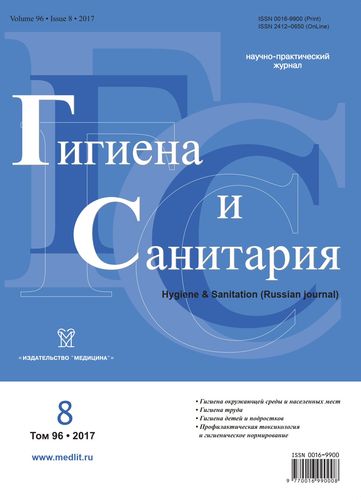The distribution of the visual attention in the training of student-pilots for the flight activity
- Authors: Merkulova A.G.1, Kalinina S.A.1
-
Affiliations:
- Research Institute of occupational health
- Issue: Vol 96, No 8 (2017)
- Pages: 752-755
- Section: OCCUPATIONAL HYGIENE
- Published: 21.10.2020
- URL: https://archivog.com/0016-9900/article/view/640677
- DOI: https://doi.org/10.47470/0016-9900-2017-96-8-752-755
- ID: 640677
Cite item
Full Text
Abstract
The gain in the aviation disasters in recent years is associated with errors of the crew due to the increasing amount of information coming from onboard systems which must be read and processed correctly. The main reason for these errors is the inappropriate distribution of the visual attention when piloting the instrument, despite the fact that training requirements are executed and aviation equipment is operated. The article is devoted to the study of the student-pilots` patterns of the distribution and switching of visual attention in the training vehicle with high-tech electronic system simulation of flight activity. Oculomotor activity (blinks, fixations and saccades) was analyzed by means of a modern system of registration of eye movements by eye-tracker SMI ETG in the form of glasses, sensorimotor reactions (variational cardiointervalometry, simple oculomotor reaction, reaction to a moving object and static tremometry) and physiological parameters (systolic and diastolic blood pressure and heart rate). The number of cycles of sight fixation, the average time of sight fixation on the main parameters of the dashboard were analyzed. The effect of flight characteristics and experience of piloting on the studied characteristics is identified. The experience of flying increases the number of attention` switching cycles and the complexity of their structure. The more experienced students pay less attention to the attitude indicator, so they have time to read important flight parameters such as flight course, flight elevation and airspeed, which leads to the improvement of the quality of piloting. The capability to distribute and shift attention was established to reduce the development of fatigue in the process of instrument flying, and thus avoid a possible accident situation.
Keywords
About the authors
Anastasia G. Merkulova
Research Institute of occupational health
Author for correspondence.
Email: efiria@mail.ru
MD, junior researcher of the laboratory of physiology of labor and preventative ergonomics FSBSI «Research Institute of occupational health, Moscow, 105275, Russian Federation.
e-mail: efiria@mail.ru
Russian FederationS. A. Kalinina
Research Institute of occupational health
Email: noemail@neicon.ru
Russian Federation
References
- Bodrov V.A., Orlov V.Ya. Psychology and Reliability: The Man in Facilities Management Systems [Psikhologiya i nadezhnost’: chelovek v sistemakh upravleniya tekhnikoy]. Moscow: Institut psikhologii RAN; 1998. (in Russian)
- Ushakov I.B., Kukushkin Yu.A., Bogomolov A.V. The Physiology of Labour and the Reliability of Human Performance [Fiziologiya truda i nadezhnost’ deyatel’nosti cheloveka]. Moscow: Nauka; 2008. (in Russian)
- Kuznetsov I.B., Stolyarov N.A. Theoretical bases of attention distribution routes forming during instrument flight. Vestnik Sankt-Peterburgskogo gosudarstvennogo universiteta grazhdanskoy aviatsii. 2012; 1(3): 29–34. (in Russian)
- Gordeeva N.D., Devishvily V.M., Zinchenko V.P. Microstructural Analysis of Executive Activity [Mikrostrukturnyy analiz ispolnitel’noy deyatel’nosti]. Moscow: VNIITE; 1975. (in Russian)
- Tyavkin I.V., Tyutyunnik V.M. Analytical and procedural model for information system flight simulation. Fundamental’nye issledovaniya. 2012; (6-2): 476–81. (in Russian)
- Orlov P.A., Laptev V.V., Ivanov V.M. Revisiting the issue of eye-tracking applying. Nauchno-tekhnicheskie vedomosti Sankt-Peterburgskogo gosudarstvennogo politekhnicheskogo universiteta. Informatika. Telekommunikatsii. Upravlenie. 2014; (5): 82–92. (in Russian)
- Mel’nichenko P.I., ed. Hygiene with Human Environmental Fundamentals: a Textbook [Gigiena s osnovami ekologii cheloveka: Uchebnik]. Moscow: GEOTAR-Media; 2011. (in Russian)
Supplementary files









